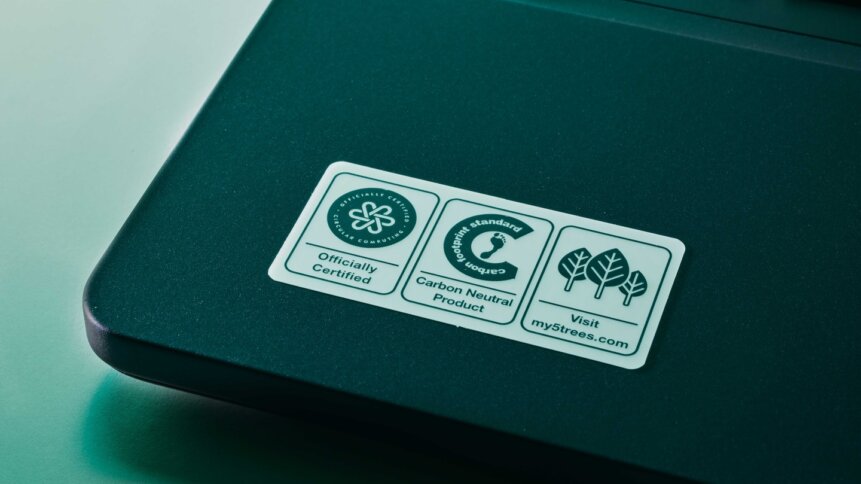Remanufacturing – a lower cost green business tech option

|
Getting your Trinity Audio player ready...
|
In Part 1 of this article, We sat down with Steve Haskew, Head of Sustainability at remanufacturer of business tech, Circular Computing, to get to grips with remanufacturing, a relatively new option for organizations to cut carbon from their tech procurement process.
In Part 1, we found out the difference between remanufacturing and straightforward refurbishment (which has been subject to significant business reluctance) and remanufacturing, which takes devices down to their sub-component levels, changes out any worn components, establishes that they are of an equal or better standard to when they were new, and sells them on with an agreed quality standard – in Circular’s case, the British Standards Institute (BSI) Kitemark of quality.
While we had Stephen in the chair, we took the opportunity to delve into the question of how remanufactured business technology could help companies meet multiple goals in a tough economy and a world of growing ecological concern.
The middle way.
THQ:
So we understand that remanufactured technology is, for instance, a generation behind being “fresh off the conveyor belt,” but that it’s been literally reconditioned to be as good as or better than its generation of technology when it was brand new. That seems to answer a few different use cases.
SH:
Yes. Refurbishment is cheap, but not usually very robust or resilient, so bigger organizations certainly have tended to shy away from it in the past. Meanwhile, we’ve been pretty much locked into the “New is best” mindset for over two decades.
Remanufactured tech is sold against the brand new, and in that case, it comes in much cheaper – we’re talking about 30-40% cheaper, usually, so in UK currency, that’s around £300-400 per machine. If you’re a local council with 3000 machines you need to supply, that’s a million poundsworth of savings that you can then allocate to other budgets. And the same is true in commercial companies. So that will keep the finance team happy. And on the other side of the equation, remanufactured tech doesn’t have the resiliency weaknesses of standard refurbished tech, so once the IT team has had a taste of using it, they’re usually pretty happy to adopt it and use it, too.
Making the switch.
THQ:
OK, so if we accept that remanufacturing is a good thing for tech teams and finance teams both, how big is the remanufacturing industry? How do companies make the switch to remanufactured technology if they’re convinced about its benefits?
SH:
That’s an interesting one. The European Remanufacturing Council’s figures say that the remanufacturing industry across all economic sectors has a global turnover of about 30 billion Euros ($32 billion). But so far, we’re the only company tackling this for business technology.
THQ:
That’s quite the bottleneck.
SH:
Agreed. The ICT industry currently makes 250 million brand new devices every single year. Now, given that we’re the only remanufacturing company in that space, in the whole world, we probably couldn’t produce 500,000 remanufactured devices per year. Currently, we have ambitions to double up to a million. But even at a million devices a year, against 250 million a year, we’re not going to make a massive impact on our own.
But right now, we’re focusing on the UK market, with ambitions to then move into Scandinavia, Northern Europe, then the Mediterranean countries, and then head over to America or South America and so forth.
THQ:
Tomorrow the world, eh? But presumably you’d welcome other remanufacturing companies in other countries too, to grow the awareness of the process and its benefits?
From the inside out.
SH:
The more companies know about the process, the easier it should be for us to have conversations about getting remanufactured technology into organizations. I mean we have over 70,000 machines out in the field already, across a whole range of client organizations, so I guess at the moment we are the proof of concept. We’re the ones having the conversations, getting companies comfortable with using remanufactured technology that’s a couple of years old but more than adequate for their needs.
THQ:
Are you finding that your approach is often the first time companies have thought about what they actually need, rather than the brand new shiny kit that’s available?
SH:
To some extent, yes. Generally what happens is the OEM will come into the market with let’s call it ten machines that will arrive in January, and say “Here are the ten machines you can choose from for the next 12 months. That’s what you can buy from us.” And that’s been the model for 25 years. So the customer tends to say “Dell have told me I can buy one of those ten machines, which one do we want?” – rather than “I’ve got users in my workplace that need to do X, Y, or Z. What do I need?” Which is a very different question. So yes, because we come at it from a point of view of providing technology that their teams need, rather than what’s newly available, sometimes their conversation with us is the first time they’ve looked at it from the inside out, rather than the outside in.
But that’s the way the industry is going anyway – more “persona-based procurement.” So out of 100 users, I’ve got the executive, I’ve got the traveler, I’ve got the desk jockey and I’ve got the deep data architect. Companies need to procure to meet all of those needs, so that everyone has the equipment they need to do their job to the best of their ability. And that means they’re thinking more about matching needs rather than simply procuring high-level technology across the board.
Ultimately, we’re trying to move the needle. We’re trying to shift the perception from “How can I possibly buy secondhand?” to “There’s second-hand and then there’s remanufactured,” and onward to that steady state we mentioned, where remanufactured tech is broadly understood to be as good as, or better than, it was when it was brand new, and it’s backed by a standard that companies can trust.
Bringing the green.
THQ:
And that’s the thing – there’s been no steady state for business on remanufacturing till now, so it’s a question of winning hearts and minds.
SH:
Yes – but it helps that this is an option companies should explore for other reasons too, not just the bottom line. Remanufacturing can help in cases where companies need to be sure of their supply chain resilience, as well as their financial security. Remanufacturing may seem like a small change to add into their business, but it can have an enormous impact both financially – remember that million pounds of savings? – but also in terms of their supply chain, and their green credentials, too.
THQ:
Ah yes, let’s talk about the green aspect. Because they’re not buying new, they’re not using all the resources that making new high-spec technology takes. Is there any data on the potential impact of that when companies use remanufactured technology?
SH:
There is. Within our space, 85 to 90% of the carbon effect of a laptop comes from the production stage, from the mind to the market. That equates to 316 kilos (almost 700 pounds) of CO2 (carbon dioxide) per laptop. Who can picture that? It’s a gas. But if you say three laptops is around a ton of CO2, sure it’s still just a number. But a ton of CO2 is equivalent to around 19,000 cubic feet. And 19,000 cubic is the airspace within an average three-bedroom house.
So for every three new laptops not made, you save the equivalent of a three-bedroom house of greenhouse gas from going up into the atmosphere and accelerating climate change. If you have 3000 laptops you need to equip your organization, that’s the equivalent of 190,000 cubic feet of carbon dioxide saved by switching to remanufactured tech. Or a thousand three-bedroom houses – which is quite the saving.
Three out of three.
Zero waste and no carbon cost has to be a carbon benefit for the company. The circular economy functions on the basis that carbon comes out at the production end of technology. Which means a decarbonized future does not happen without a circular economy. It just cannot.
And remanufacturing sits at the heart of the circular economy. Therefore, a decarbonized future cannot happen without remanufacturing.
So if you have a Net Zero target, and you’ve made that public, your stakeholders, your staff, and your supply chain expect you to deliver on that. We have evidence that buying brand new laptops is working against that promise, so you have to look at what you’re doing, and you have to make changes. Otherwise, you’re just greenwashing your business.
We’re able to help organizations achieve much more than just buying technology that’s cheaper than they currently buy. It isn’t just about the price. The cost is in doing the right thing to stick to your stated green principles, and maintaining your business’ integrity. The price reduction almost comes as a secondary benefit to some companies.
There are different stakeholders in each company – the C-suite, the financial team, and the IT team. Remanufacturing helps the C-suite show its commitment to its green principles. It helps the financial team save money on their IT procurement. And it helps the IT department ensure they’re delivering cost-efficient persona-driven technology for their organization.
THQ:
And three out of three can’t be bad.









